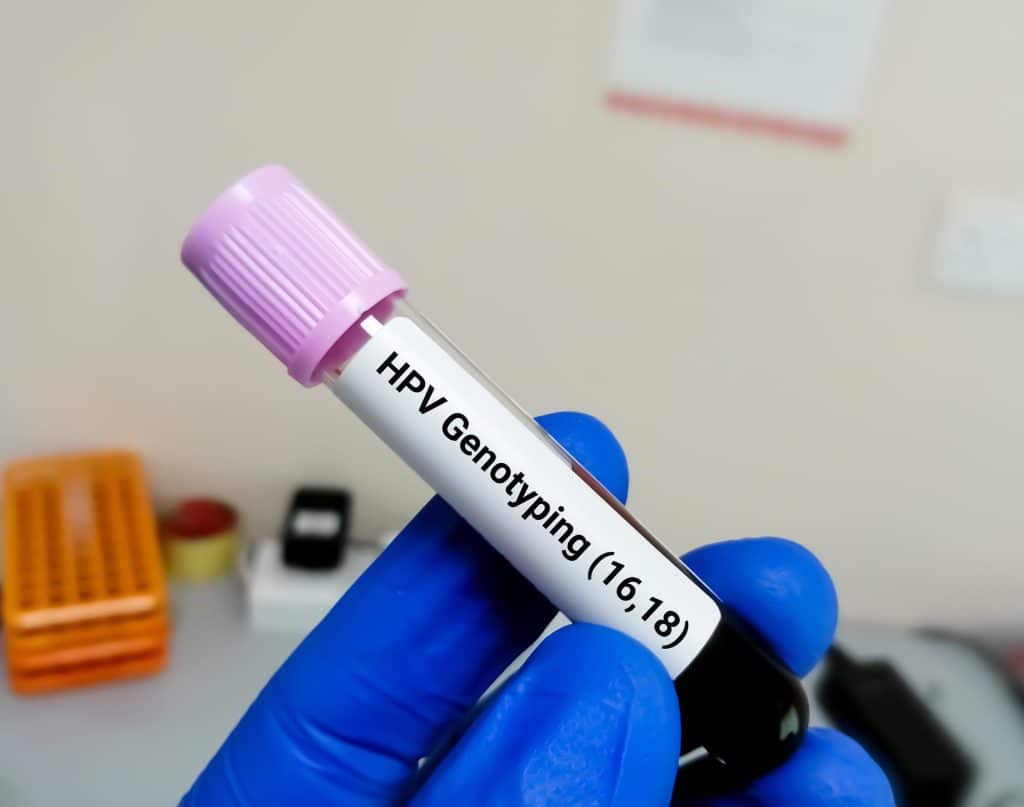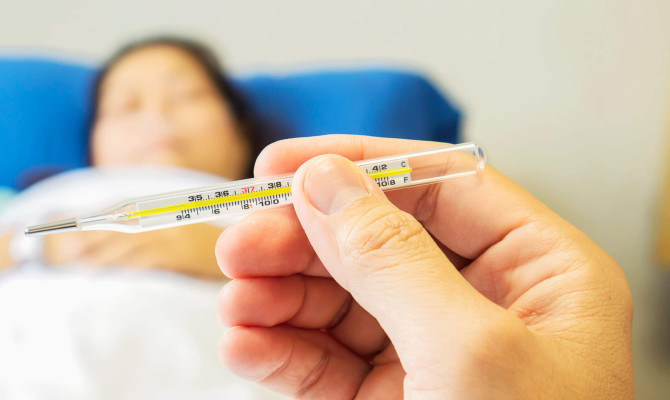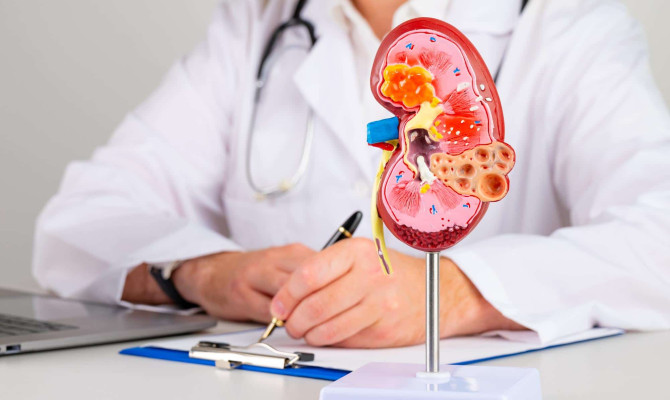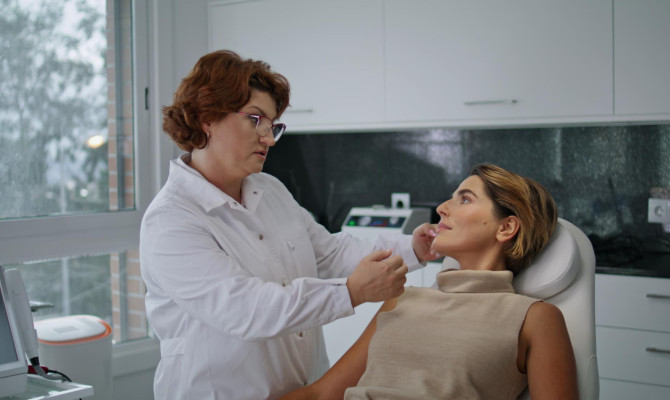Human papillomavirus infection : A General Overview

- Human Papillomavirus
- 16 Aug 2023
Overview
What is Human papillomavirus?
An HPV infection is the most prevalent Sexually Transmitted Infection (STI). The papillomavirus family member, Human papillomavirus (HPV), is the cause of it. They can create warts on many regions of the body. There are almost 200 different varieties. Only humans are known to be affected by HPV, and one individual can acquire multiple types of the virus. Approximately 40 of these viruses spread by direct sexual interaction with someone infected. Additionally, they can transmit through closer, skin-to-skin contact. Some of these can result in cancer.

Types
What are the different type of HPV?
Infections with the human papillomavirus can be of three types
- Cutaneous or non-genital type – warts and other skin growths on the hands and feet.
- Mucosal or anogenital type – warts in the mouth, upper respiratory tract, genitals, or anus.
- Epidermodysplasia verruciformis (EV) – warts are flat and often mistaken for fungal infections.
Depending on the risk
- Low-risk HPV infections – warts and low-grade precancerous lesions are frequently seen.
- High-risk HPV infections – cancerous and precancerous lesions of the mouth, throat, cervix, and anogenital areas of males and females.1Types| Researched based study from Nlm.nih.gov
Transmission
What are the ways of transmission?
Any Human Papillomavirus (HPV) can cause an infection. They can spread between individuals in multiple ways:
- Skin contact – Direct touch on a wart might cause them to spread. If someone touches anything that has previously touched a wart, it might also cause a wart to spread.
- Sexual contact – can spread through intimate relationships, including sexual contact.
- Mother to child – The baby may contract the virus during pregnancy or delivery if the mother has genital warts and an HPV infection.
Cutaneous type
- Skin-to-skin contact is the main route by which the virus spreads.
- Most frequently brought on by HPV subtypes 1, 2, 4, 27, or 57. 1Causes| Researched based study from Nlm.nih.gov
- HPV infection happens when the virus infects the body, typically via a cut, scratch, or tiny break in a person’s skin.
- A locker room is the most typical setting for developing foot warts.
Mucosal or Genital type
- Acquired through sexual contact, including oral, anal, and other types of direct contact with the skin in the genital area.
- referred to as low-risk HPV, subtypes 6 and 11 of HPV are to blame for the emergence of tumors in the airways in children and adults.
Epidermolysis verruciformis
- It occurs due to a weakened immune system’s ability to combat and eliminate the HPV infection.2Causes| Researched based study from Nlm.nih.gov
- Manifests in early childhood and can impact any body part.
Low-risk HPV infections
- Subtypes 11 and 6 are responsible.
- They are regarded as sexually transmitted but can spread through other intimate contacts.
High-risk HPV infections
- Are most frequently brought on by HPV strains 16 and 18.
- However, because of their link to the emergence of cervical cancer, subtypes 31, 33, 35, 45, 52, and 58 also come into the high-risk HPV category.2Causes| Researched based study from Nlm.nih.gov
Symptoms
HPV symptoms
HPV infection does not usually produce any symptoms except a few warts that may be painless, as follows.3Symptoms| Researched based study from Medlineplus.gov
Genital warts
- Little cauliflower-like bumps, stem-like protrusions, or flat lesions.
- In women, warts may appear in the vagina, vulva, cervix or in the anus.
- In men, on the penis, testicles, or around the anus.
- They may be itchy, but they rarely result in discomfort or pain.
Common warts
- Bumps that are rough and elevated.
- Warts appear mostly on fingers and hands.
- Common warts typically look bad but can also hurt or be prone to bleeding or harm.
Plantar warts
- Grainy and hard growths typically develop under the feet.
- These warts could be uncomfortable.
Flat warts
- Lesions with a flat top and a small bump.
- They can show up anywhere, but on children’s faces and men’s beards more frequently than elsewhere.
- Women are more prone to getting them on their legs.
Diagnosis
Diagnosis of HPV
A doctor can typically diagnose an HPV infection by asking about a patient’s sexual history, size and location of any warts or skin lesions, history of other illnesses, and whether they have ever used public restrooms or swimming pools and followed by an examination of the body and any additional tests that may be necessary.
Physical Examination
- Carefully inspect the hands and feet, looking for warts between the fingers and the bottom of the toes.
- Use a speculum to look at the cervix, vaginal walls, or anus in females.
- Depending on the signs and symptoms, men might need to have their urethras examined.
- An oral and throat examination may be appropriate depending on the patient’s history of sexual behavior.
Lab tests
- PAP smear – can identify irregularities that could develop into cancer. A swab from the vagina or cervix is taken by the doctor and sent for laboratory testing.4Diagnosis| Researched based study from Medlineplus.gov
- DNA test – performed on cervix cells- can identify the high-risk strains connected to genital cancers. For females 30 and older, it’s advised along with a Pap test.
- Colposcopy – will be carried out by the doctor if the results of the DNA and pap tests are abnormal. The doctor will carefully examine the cervix using a colposcope that magnifies the view of the cervix and obtain samples of any areas that appear suspicious.
Vulnerability
Who are at risk?
People that have a higher risk of contracting HPV include:
- An HPV infection in the genitalia is more likely to occur in people with more sexual partners.5Vulnerability| Researched based study from Mayoclinic.org
- Another factor that raises the risk is having a sexual relationship with someone with several partners.
- An increased risk of HPV infections exists in those with weakened immune systems. Example – HIV infection.
- Warts are more likely to appear on skin that has been broken or punctured.
- The chance of contracting HPV may be increased by touching someone else’s warts or by contacting areas previously exposed to HPV, like community showers or swimming pools.
- People who have several sexual partners and those with persistent HPV infections are at extremely high risk of picking up new HPV subtypes.
The subsequent risk factors could be linked to the transformation of an HPV infection into cancer:
- Long-term usage of oral contraceptives.
- Being exposed to UV and radiation.
- Smoking habit.
- Chewing nuts of betel.
Complications
What are the associated complications?
An HPV infection can lead to the following complications:
- Tumors in the larynx, nose, soft palate, tonsils, or on the tongue.
- On rare occasions, if the infection is passed from a mother to her kid, it could result in a noncancerous development in the infant’s voice box.
- Warts may have an ugly effect.
- Depression and warts-related self-esteem issues.
- Genital warts may restrict the passage of urine.
- Infection and ulceration.
- Spread of HPV infection to others.
- On occasion, they develop into cancer, such as cervical cancer. 6Complications| Researched based study from Cdc.gov
- These strains may also be linked to cancers of the mouth, lungs, upper respiratory tract, and genitalia.7Complications| Researched based study from Nlm.nih.gov
Management
Management strategies of HPV
There are treatments for warts that one can use. A healthcare provider may burn, freeze, or surgically remove them if medicines do not work.
Medications
- Salicylic acid – works by gradually eliminating the wart’s outer layers.8Management| Researched based study from Nlm.nih.gov
- Trichloroacetic acid – removes warts from the soles of the feet, genitalia, and palms.9Management| Researched based study from Fortunejournals.com
- Podofilox – works by removing tissue from genital warts.10Management| Researched based study from Clevelandclinic.org
- Imiquimod – increases the immune system’s capacity to combat HPV.11Management| Researched based study from Medlineplus.gov
Surgical procedures
The doctor might advise eliminating warts using one of these techniques if medications don’t work:
- Use liquid nitrogen to freeze.8Management| Researched based study from Nlm.nih.gov
- Electrical current-induced burning.
- Surgical excision.
- Laser therapy12Management| Researched based study from Nlm.nih.gov
Prevention
Steps to prevent HPV
By doing the following, one can lower their chance of getting infected by a HPV virus:
- When administered before a person starts having sexual activity, they are secure and effective and may protect against illnesses, such as cancers brought on by HPV.13Prevention| Researched based study from Cdc.gov
- Routine screening between the ages of 21 and 65 can prevent cervical cancer in women.
- To reduce your risk of contracting HPV during intercourse, always use condoms correctly. However, HPV can spread to places that the condom cannot cover. Thus, condoms might not wholly guard against contracting HPV.
- Refrain from having several sexual partners and maintain a mutually monogamous union.
Prognosis
HPV Prognosis
It’s crucial to realize that HPV alone cannot cause cancer; other factors, including smoking, a lack of folate, exposure to UV light, immunosuppression, and pregnancy, must also be present. After an HPV infection, the outlook is favorable, but recurrences are frequent. Although there are numerous wart treatments, none are particularly effective, and most patients need to undergo several of them. The greatest risk of cancer development is among immunocompromised individuals with a HPV infection.
Any feedback on this article?
 This Articles content was accurate
This Articles content was accurate Very Informative Article
Very Informative Article I have a question or a comment
I have a question or a comment
 This article contains inaccurate content
This article contains inaccurate content This article was not helpful
This article was not helpful I have a question or a comment
I have a question or a comment
We appreciate your helpful feedback!
Checkout our social pages
References
-
National Library of Medicine
Human Papillomavirus | Types
-
National Library of Medicine
Epidermodysplasia Verruciformis | Causes
-
Medline Plus
HPV | Symptoms
-
Medline Plus
Human Papillomavirus (HPV) Test | Diagnosis
-
Mayoclinic
HPV infection | Vulnerability
-
Centers for Disease Control and Prevention
Cancers Associated with Human Papillomavirus (HPV) | Complications
-
National Library of Medicine
HPV infections and lung cancer | Complications
-
National Library of Medicine
Cryotherapy with liquid nitrogen versus topical salicylic acid application for cutaneous warts in primary care: randomized controlled trial | Management
-
Fortune Journals.
Effectiveness of Topical 100% Trichloroacetic Acid in Treatment of Anogenital Warts in Male Patients | Management
-
Cleveland Clinic
Podofilox topical solution | Management
-
Medline Plus
Imiquimod Topical | Management
-
National Library of Medicine
CO2 Laser therapy versus cryotherapy in treatment of genital warts; a Randomized Controlled Trial (RCT) | Management
-
Centers for Disease Control and Prevention
Genital HPV Infection – Basic Fact Sheet | Prevention





































